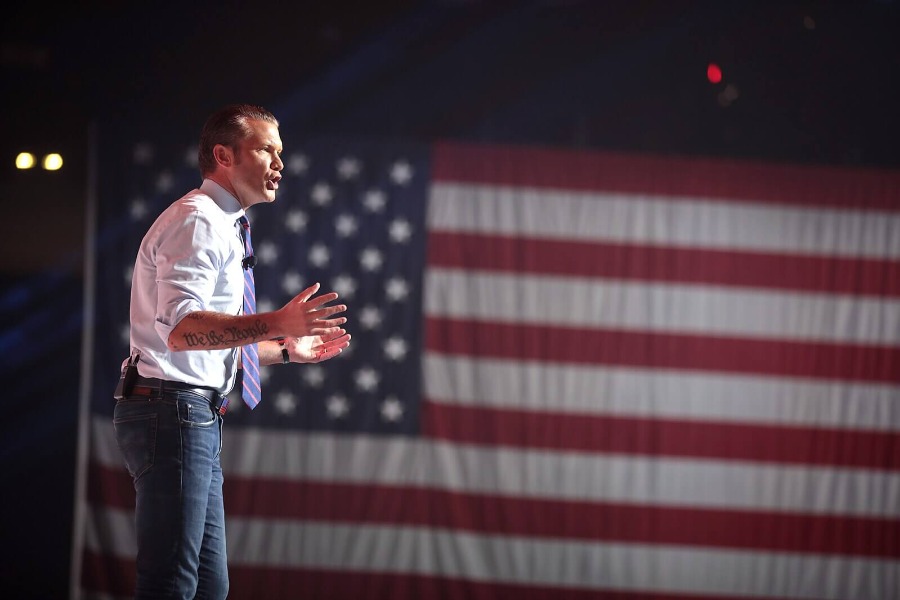Laws of War: Where Both Liberals and Realists Are Wrong
Did outlawing war in the mid-20th Century change international politics? Oona Hathaway and Scott Shapiro have reignited this debate with their book “The Internationalists: How a Radical Plan to Outlaw War Remade the World.” They suggest that it did and point to the dramatic decline of wars of conquest after the Kellogg-Briand Pact as evidence.
Published by The Lawfare Institute
in Cooperation With

Did outlawing war in the mid-20th Century change international politics? Oona Hathaway and Scott Shapiro have reignited this debate with their book “The Internationalists: How a Radical Plan to Outlaw War Remade the World.” They suggest that it did and point to the dramatic decline of wars of conquest after the Kellogg-Briand Pact as evidence. Stephen Walt recently praised the book while maintaining his view that Kellogg-Briand “is a mostly irrelevant footnote to history.” He doesn’t see many instances in which leaders choose not to go to war because of this treaty or the norms behind it.
As Hathaway and Shapiro on one side and Walt on the other argue over who is being more “realistic,” it becomes clear that they are all both right and wrong, in part, and a third way forward is revealed. The legalization of war did indeed change world politics but its main effect has been to legitimize wars of “self-defense” and delegitimize all other kinds of war. This is not trivial, as Walt would have it, but neither is it the end of a world in which war is “a legitimate means of righting wrongs” as Hathaway and Shapiro say (Page XV). As is often the case in either-or academic debates, it’s worth looking beyond where the two sides agree to see what else is going on.
My new book "How to Do Things With International Law" unpacks an assumption shared by both liberals and realists in the debate over international law: Both approach law as a constraint on the autonomy of governments. Both also look for evidence that the choices of governments are indeed constrained by international law. In general, liberals find some while realists do not. On the ban on war, this plays out—as Hathaway and Shapiro document—in the rapid decline of aggression and conquest as motives for war after they are made illegal in 1928 and reinforced in the U.N. Charter. Walt suggests that the change is better explained by the rise of nationalism and the costs of foreign territorial occupation.
Legal theorists are accustomed to thinking about law as constraining actors in some ways and enabling them in others. This duality is useful in understanding the connections between international law and international politics. In international relations academia, neither realists nor liberal internationalists have paid much attention to the enabling and permissive power of international law. (One exception is Charlotte Peevers in her excellent book "The Politics of Justifying Force.") Once recognized, it helps make sense of the political dynamics at the heart of international law.
The ban on war illustrates law’s enabling function. At the same time that the U.N. Charter forbids governments from the “threat or use of force against ... any state,” it also makes clear that this shall not “impair the inherent right of individual or collective self-defence if an armed attack occurs against a Member of the United Nations.” The ban on war specifies what is forbidden and what is permitted. The latter includes the use of force as needed in self-defense and with particular limits defined in the Charter, while the former includes all other motives for war. Wars authorized by the U.N. Security Council fit into a separate set of rules.
This seems sensible in policy terms: It is unlikely that governments would be willing to give up their ability to legally defend themselves in an emergency. The self-defense rules were added in the drafting of the Charter by a group of Latin American states that feared the ban on war might be interpreted to forbid the United States coming to their defense if they were attacked. This was the first time that self-defense as a justification for war was given a formal legal foundation, though the power of the idea prior to 1945 is hinted at by the way Article 51 refers to a pre-existing “inherent” right to self-defense.
My book starts by recognizing the political productivity of this clause. The notion of acting in self-defense creates a legal and political resource that governments can use thereafter to do something that they could not do before: It legitimizes the notion that wars of self-defense are lawful while all other kinds of war without Security Council approval are unlawful. It thus gives to governments a formal legal argument with which to bolster their justifications for the use of force.
This resource changes the politics of legitimation. States now have an incentive to explain and justify their use of force in terms of self-defense, and these terms have political salience because they tap into a widespread belief in the “rule of law” of international politics. In a world where acting lawfully is seen as laudable, being able to cast one’s wars in lawful terms is an advantage. This probably has deep unseen effects as it conditions foreign-policy practitioners to conceive of the dangers in the outside world as threats to national security rather than other terms. It shapes how states see the world.
It is no surprise that most wars since 1945 have been justified as self-defense. Nor is it surprising that they are often framed this way by both sides in the conflict. The concept is politically useful. To be sure, the discourse of self-defense may well be a thin veneer laid over other motives for war, but this helps make the point that the discourse is powerful for governments—so powerful that it attracts uses that may be a far stretch from the prevailing interpretations of the formal text. Even if concocted to some degree, reference to self-defense as a way of justifying war after 1945 is further evidence that Hathaway and Shapiro are indeed right on one count: The laws around war have changed the course of world history.
But the change is not the one they emphasize. With self-defense now encoded as the legal justification for recourse to force, governments are simultaneously constrained and empowered—they lost the freedom to go to war for any reason they might desire, but they gained self-defense as the single, clear, incontrovertible path to lawful war. It strengthens governments by providing resources for legitimation that are at the same time legal and political; it is all the more powerful to the extent that the ideology of the rule of law pervades international politics.
The malleability of self-defense is of course not infinite. Many governments have found themselves roundly denounced for extending it beyond what the self-styled interpretive community for law sees as reasonable. It is interesting, though, that over the years, the informal development of self-defense has become more permissive rather than less. The original text includes requirements that self-defense be invoked only after an armed attack and that it must cease once the Security Council takes action. Neither of these conditions is now considered a legal requirement. State practice has changed the meaning of the law. The rules for what counts as self-defense have expanded as governments use the legal language to encompass ever-wider array of actions against perceived and constructed international threats.
Stephen Walt is right that the ban on war did not remove war from the toolkit of states, but he is wrong to claim that it hasn’t accomplished anything. Hathaway and Shapiro are right that the ban transformed the political landscape for the use of force in the second half of the 20th century, but this decline in territorial conquest also needs to be situated in the context of the proliferation of claims of self-defense. The acceptable rationale for war has shifted as a result of these rules, even if the strategic calculations, economic ambitions and existential desires that motivate leaders to go to war have not. Whether that’s progress or not remains an open question.




